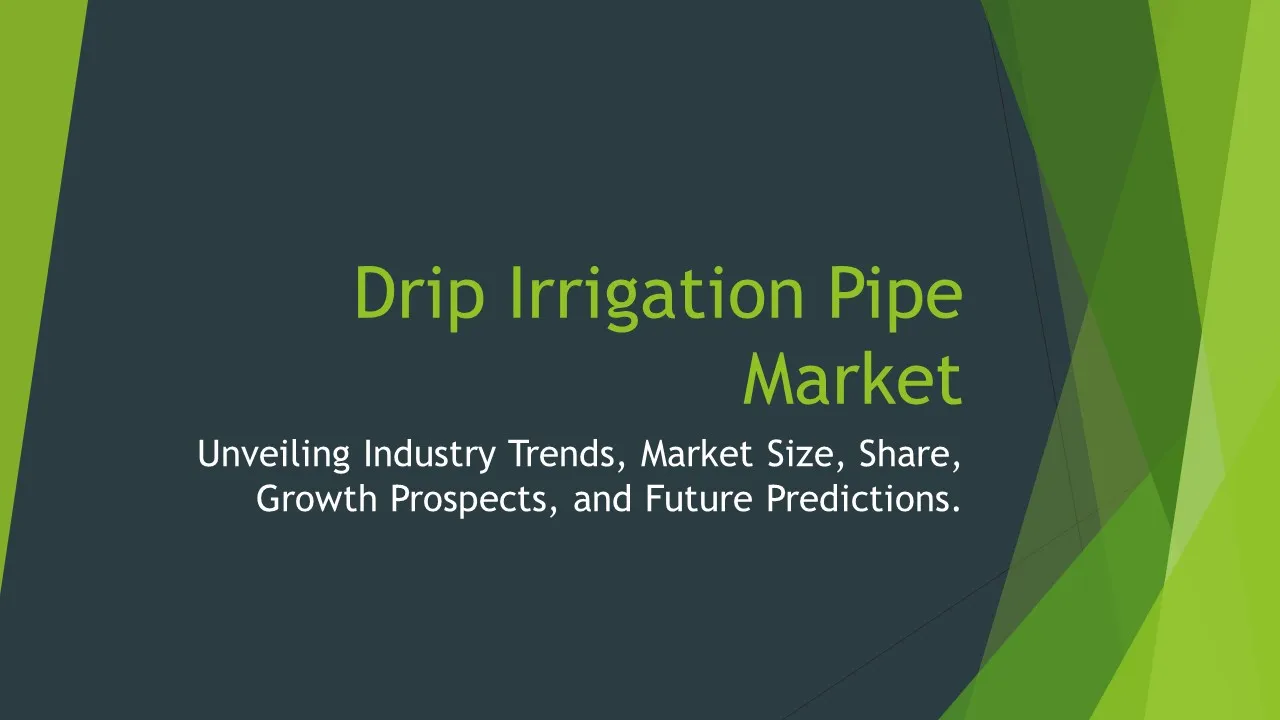Silage Inoculants amp Enzymes Sales
Silage Inoculants & Enzymes Market Segments - by Product Type (Bacterial Inoculants, Enzyme Inoculants, Combination Inoculants), Application (Corn Silage, Grass Silage, Alfalfa Silage, Others), Form (Liquid Inoculants, Dry Inoculants), Microorganism Type (Lactobacillus spp., Pediococcus spp., Enterococcus spp., Others), and Region (North America, Europe, Asia Pacific, Latin America, Middle East & Africa) - Global Industry Analysis, Growth, Share, Size, Trends, and Forecast 2025-2035
- Report Preview
- Table Of Content
- Segments
- Methodology
Silage Inoculants & Enzymes Sales Market Outlook
The global silage inoculants and enzymes market is projected to reach approximately USD 1.4 billion by 2035, expanding at a compound annual growth rate (CAGR) of around 6.4% during the forecast period from 2025 to 2035. This growth can be attributed to the rising demand for high-quality silage among livestock farmers, which is largely driven by the increasing global meat consumption and the subsequent need for enhanced feed quality. Furthermore, advancements in agricultural biotechnology that enable the development of more effective and efficient inoculants and enzymes are likely to bolster market growth. The growing awareness regarding the benefits of using silage inoculants to improve fermentation processes and increase the nutritional value of feed is also propelling the market. With the agricultural sector increasingly adopting sustainable practices, the use of these products aligns with eco-friendly farming methods, further contributing to their rising popularity.
Growth Factor of the Market
The growth of the silage inoculants and enzymes market is underpinned by several critical factors. Firstly, the consistent rise in livestock population and meat production globally requires farmers to optimize feed resources, hence increasing the demand for silage. Silage inoculants play a vital role in enhancing the fermentation process, subsequently improving the nutritional quality of silage and its digestibility for livestock. Secondly, the trend toward sustainable farming practices encourages the utilization of biological products such as inoculants and enzymes that are less harmful to the environment compared to synthetic alternatives. Additionally, technological advancements in microbiology are leading to the development of more effective formulations, which are expected to drive market adoption. Furthermore, the increasing feed costs are pushing farmers toward investing in silage inoculants as a cost-effective solution to enhance feed efficiency and quality. Lastly, the rising trend of precision agriculture is fostering the adoption of innovative solutions in the farming sector, including the use of specialized silage inoculants and enzymes.
Key Highlights of the Market
- The global silage inoculants and enzymes market is expected to grow at a CAGR of 6.4% from 2025 to 2035.
- Rising demand for high-quality silage from the livestock sector is a significant growth driver.
- Technological advancements in inoculant formulations are enhancing their effectiveness.
- Sustainable farming practices are contributing to the growing adoption of biological silage solutions.
- Increasing feed prices are prompting farmers to invest in silage inoculants for improved feed efficiency.
By Product Type
Bacterial Inoculants:
Bacterial inoculants are one of the most widely used products in the silage inoculants and enzymes market. They primarily consist of selected strains of lactic acid bacteria, which significantly enhance the fermentation process in silage production. By promoting the production of lactic acid, these inoculants help reduce pH levels, leading to a more stable and palatable silage product. The use of bacterial inoculants has been shown to improve the nutritional quality of silage while also minimizing spoilage during storage. The increasing adoption of these inoculants among dairy and beef cattle producers is significantly driving the growth of this segment. With a growing body of research supporting their efficacy, bacterial inoculants are expected to maintain a strong market presence for the foreseeable future.
Enzyme Inoculants:
Enzyme inoculants are gaining traction in the silage inoculants market due to their ability to enhance the breakdown of fibrous components in plant material, thus improving the overall digestibility of silage. These inoculants contain specific enzymes that accelerate the fermentation processes, facilitating the rapid conversion of sugars into acids. By optimizing the fermentation environment, enzyme inoculants not only enhance the nutritional profile of the silage but also contribute to reducing nutrient losses during storage. As livestock producers seek to maximize feed efficiency, the demand for enzyme inoculants is poised for significant growth. The combination of bacterial and enzyme inoculants is also becoming popular, as it offers synergistic effects that enhance fermentation and nutrient availability.
Combination Inoculants:
Combination inoculants, which blend both bacterial and enzyme components, represent a unique segment of the silage inoculants market. These formulations are designed to capitalize on the strengths of both bacterial and enzyme inoculants, providing a comprehensive solution that enhances fermentation efficiency while improving the nutritional quality of silage. By utilizing a combination of microorganisms and enzymes, these inoculants can reduce the fermentation time, minimize spoilage losses, and enhance the overall digestibility of silage for livestock. As producers increasingly recognize the benefits of using combination inoculants, this segment is expected to witness robust growth in the coming years, driven by the demand for high-quality silage that meets the nutritional needs of livestock.
By Application
Corn Silage:
Corn silage is a predominant application segment within the silage inoculants and enzymes market, primarily due to the high nutritional value it offers for ruminant livestock. Farmers often face challenges associated with the fermentation quality of corn silage, which is where inoculants come into play. By ensuring a rapid and efficient fermentation process, silage inoculants help preserve the nutritional value of corn silage while minimizing losses during storage. The increasing acreage devoted to corn cultivation for silage purposes, coupled with the rising demand for dairy and beef production, is propelling the market for corn silage inoculants. Additionally, advancements in inoculant technology tailored specifically for corn silage are further driving growth in this application segment.
Grass Silage:
The grass silage application segment is also experiencing significant growth, as it serves as a vital feed resource for a wide variety of livestock, particularly ruminants. Grass silage is often subject to variability in fermentation quality due to the natural composition of grass, which can lead to difficulties in achieving optimal nutritional value. Silage inoculants can mitigate these issues by promoting the fermentation of sugars and enhancing the overall digestibility of the silage. As the demand for high-quality grass silage continues to rise, especially in regions where grass is the predominant feed source, the use of silage inoculants tailored for grass silage is expected to grow correspondingly, driven by the need for improved feed efficiency and livestock productivity.
Alfalfa Silage:
Alfalfa silage is highly valued for its rich protein content and is a staple feed for dairy cattle. The application of silage inoculants in alfalfa silage is particularly important, as the fermentation characteristics of alfalfa can be complex due to its moisture content and nutritional profile. Inoculants play a crucial role in enhancing the fermentation process and ensuring that the nutrients in alfalfa silage are preserved effectively. As dairy producers increasingly recognize the benefits of using silage inoculants to optimize the quality of alfalfa silage, this segment is likely to witness healthy growth in the coming years. The rising focus on maximizing milk production and overall cattle health is expected to further drive the adoption of alfalfa silage inoculants.
Others:
The 'Others' application segment encompasses a variety of silage types, including specialty silages and alternative forages that may not fit into the common categories. This segment includes silages made from various crops, such as sorghum, legumes, and other non-traditional forage sources. The use of silage inoculants in these applications is becoming increasingly important as producers strive to optimize the fermentation process and enhance the feed value of these alternative silages. As farmers diversify their silage production strategies to include a broader range of forage crops, the demand for specific inoculants tailored for these unique applications is expected to grow, thereby driving the expansion of the 'Others' segment in the market.
By Form
Liquid Inoculants:
Liquid inoculants are one of the most popular forms utilized in the silage inoculants and enzymes market. These products are typically easy to apply and can be mixed seamlessly with silage during the harvesting and ensiling process. Liquid inoculants allow for uniform distribution across the silage mass, ensuring effective fermentation and improved silage quality. Their convenience and effectiveness have led to widespread adoption among livestock producers, particularly in large-scale operations. As the market continues to evolve, liquid inoculants are expected to maintain a robust position due to their ease of use and proven benefits in enhancing the fermentation process.
Dry Inoculants:
Dry inoculants are another significant form in the silage inoculants market, typically comprising a powdered formulation that can be applied to forage before ensiling. While they require a different application method compared to liquid inoculants, dry inoculants offer certain advantages, including longer shelf life and ease of storage. Farmers may choose dry formulations based on personal preference or specific operational needs. As awareness of silage quality continues to grow, the market for dry inoculants is also expected to expand, particularly as producers seek diverse solutions for improving silage fermentation and quality.
By Microorganism Type
Lactobacillus spp.:
Lactobacillus spp. is one of the primary microorganism types used in silage inoculants, known for their ability to rapidly ferment sugars into lactic acid. This process is crucial for achieving a stable pH level in silage, which in turn helps to preserve the nutritional value and prevents spoilage. The effectiveness of Lactobacillus spp. in promoting efficient fermentation has made them a favored choice among livestock producers. With the rising demand for high-quality silage, the market for Lactobacillus-based inoculants is expected to grow significantly, driven by their demonstrated benefits in enhancing silage quality and animal performance.
Pediococcus spp.:
Pediococcus spp. is another important microorganism utilized in silage inoculants. Similar to Lactobacillus, Pediococcus spp. play a crucial role in lactic acid fermentation and contribute to reducing the pH of silage. They are particularly effective in ensuring rapid fermentation, which minimizes nutrient losses and spoilage. The inclusion of Pediococcus in silage inoculant formulations can enhance fermentation stability, making it a valuable option for farmers seeking to improve the quality of their silage. As livestock producers continue to emphasize feed efficiency, the demand for Pediococcus-based inoculants is expected to rise.
Enterococcus spp.:
Enterococcus spp. are utilized in silage inoculants to provide additional fermentation benefits. They are known for their ability to ferment a wider range of sugars compared to other lactic acid bacteria, which can lead to enhanced fermentation efficiency. The presence of Enterococcus in inoculant formulations can contribute to improved silage quality and stability, making them a valuable addition to the market. As the industry shifts towards more specialized and effective inoculant solutions, the demand for Enterococcus-based products is likely to increase.
Others:
The 'Others' category includes various microorganisms that may be employed in silage inoculants, such as yeast and fungi, which play a supplementary role in the fermentation process. These microorganisms can enhance the overall fermentation environment, contributing to better silage quality and digestibility. The use of a diverse range of microorganisms in silage inoculants reflects the industry's trend toward developing more comprehensive solutions to address the specific needs of livestock producers. As research continues to uncover the benefits of alternative microorganisms in silage production, this segment is expected to experience growth.
By Region
The North American region holds a significant share of the global silage inoculants and enzymes market, driven by the high demand for livestock feed and the increasing awareness of silage quality among farmers. The United States, in particular, is a major contributor due to its large-scale dairy and beef production. The market in North America is anticipated to grow at a CAGR of 6.2% during the forecast period, supported by advancements in agricultural practices and an emphasis on sustainable solutions. As farmers in this region continue to seek innovative products to enhance feed efficiency and livestock health, the adoption of silage inoculants is expected to rise, further solidifying North America's position in the market.
In Europe, the silage inoculants and enzymes market is also poised for growth, driven by the region's strong focus on livestock production and the increasing consumption of dairy products. European countries are known for their advancements in agricultural technologies, leading to a growing interest in high-quality silage solutions. The market in Europe is projected to witness robust growth, supported by the rising adoption of precision farming and sustainable agricultural practices. As producers in Europe continue to emphasize the importance of silage quality and nutritional value for livestock, the demand for silage inoculants is expected to follow suit, enhancing the region's competitiveness in the global market.
Opportunities
The silage inoculants and enzymes market presents numerous opportunities for growth, particularly as the global demand for livestock products continues to rise. With increasing concerns about food security and the need for sustainable agricultural practices, farmers are turning to silage inoculants as a solution to improve feed efficiency and reduce waste. The continued development of innovative inoculant formulations, including those that target specific crops or livestock needs, offers significant potential for market expansion. Moreover, the growing trend toward precision agriculture presents an opportunity for the integration of silage inoculants into broader farm management systems, providing farmers with tailored solutions that optimize silage production and enhance overall efficiency. As livestock producers become more educated about the benefits of silage inoculants and enzymes, the demand for these products is expected to surge.
Additionally, the increasing focus on animal health and welfare is driving the need for high-quality feed, which directly correlates with the use of effective silage inoculants. Farmers are increasingly recognizing that investing in silage quality translates to better animal performance and productivity, making inoculants a valuable tool in their operations. There is also a growing interest in developing economically viable silage options that utilize alternative forages and crops, which presents an opportunity for manufacturers to create specialized inoculant products. As research continues to explore the potential of various microorganisms in enhancing silage quality, the market could see an influx of innovative products that meet the evolving needs of livestock producers.
Threats
Despite the promising outlook for the silage inoculants and enzymes market, several threats could hinder growth. One significant challenge is the potential for regulatory restrictions on the use of certain microorganisms in inoculants, which could impact formulation options for manufacturers. As the industry is subjected to increasing scrutiny from regulatory bodies concerning the safety and efficacy of biological products, any sudden changes in regulations could disrupt market dynamics and limit product availability. Furthermore, the growing popularity of alternative feed options may divert attention from traditional silage practices, leading to a potential decline in demand for silage inoculants. Additionally, factors such as climate change and its effects on crop yields could pose risks to silage production, ultimately impacting the demand for inoculants.
Another concern for the silage inoculants market is the intense competition from synthetic alternatives, which may be favored by some producers seeking immediate results. While silage inoculants offer long-term benefits, the perception of slower effects compared to synthetic products could deter some farmers from making the switch. Additionally, the fluctuating prices of raw materials used in inoculant formulation could pose challenges for manufacturers in maintaining competitive pricing while ensuring product quality. Addressing these threats will require a proactive approach from industry stakeholders to ensure that the benefits of silage inoculants and enzymes remain at the forefront of livestock production practices.
Competitor Outlook
- Alltech Inc.
- BASF SE
- Chr. Hansen Holdings A/S
- Corteva Agriscience
- DSM Nutritional Products AG
- Lallemand Inc.
- Nutreco N.V.
- ForFarmers N.V.
- Kemin Industries, Inc.
- Pioneer Hi-Bred International, Inc.
- Quality Silage, Inc.
- Ravita Group
- Silage Solutions, LLC
- United Feeds, LLC
- Zinpro Corporation
In the competitive landscape of the silage inoculants and enzymes market, several key players are vying for market share. Companies such as Alltech Inc. and Chr. Hansen Holdings A/S have established themselves as leaders by investing in research and development to create innovative and effective products tailored to the needs of livestock producers. These companies leverage their extensive experience in animal nutrition and microbiology to offer a diverse range of silage inoculants that enhance fermentation and improve feed efficiency. With a strong focus on sustainability and animal welfare, these organizations have positioned themselves as preferred suppliers in the market, earning the trust of livestock producers worldwide.
BASF SE and Corteva Agriscience are also notable competitors in this space, providing a broad portfolio of agricultural solutions, including silage inoculants. Both companies emphasize sustainability and innovation, utilizing advanced technologies to develop inoculant formulations that address specific challenges faced by livestock producers. Their commitment to research-driven product development has enabled them to stay ahead of market trends and respond to the evolving needs of farmers. As competition intensifies, these companies are expected to continue expanding their product offerings and enhancing their market presence through strategic partnerships and acquisitions.
Another significant player, Lallemand Inc., focuses on fermentation solutions for both animal nutrition and plant health, making it a key competitor in the silage inoculants market. With a strong emphasis on natural solutions and sustainable practices, Lallemand has gained a solid reputation among livestock producers. Their extensive research initiatives have led to the development of a variety of inoculant products that cater to different types of silage, further diversifying their market reach. As the demand for high-quality silage rises, Lallemand's commitment to innovation and customer satisfaction positions them for continued success in a competitive environment.
1 Appendix
- 1.1 List of Tables
- 1.2 List of Figures
2 Introduction
- 2.1 Market Definition
- 2.2 Scope of the Report
- 2.3 Study Assumptions
- 2.4 Base Currency & Forecast Periods
3 Market Dynamics
- 3.1 Market Growth Factors
- 3.2 Economic & Global Events
- 3.3 Innovation Trends
- 3.4 Supply Chain Analysis
4 Consumer Behavior
- 4.1 Market Trends
- 4.2 Pricing Analysis
- 4.3 Buyer Insights
5 Key Player Profiles
- 5.1 BASF SE
- 5.1.1 Business Overview
- 5.1.2 Products & Services
- 5.1.3 Financials
- 5.1.4 Recent Developments
- 5.1.5 SWOT Analysis
- 5.2 Alltech Inc.
- 5.2.1 Business Overview
- 5.2.2 Products & Services
- 5.2.3 Financials
- 5.2.4 Recent Developments
- 5.2.5 SWOT Analysis
- 5.3 Nutreco N.V.
- 5.3.1 Business Overview
- 5.3.2 Products & Services
- 5.3.3 Financials
- 5.3.4 Recent Developments
- 5.3.5 SWOT Analysis
- 5.4 Ravita Group
- 5.4.1 Business Overview
- 5.4.2 Products & Services
- 5.4.3 Financials
- 5.4.4 Recent Developments
- 5.4.5 SWOT Analysis
- 5.5 Lallemand Inc.
- 5.5.1 Business Overview
- 5.5.2 Products & Services
- 5.5.3 Financials
- 5.5.4 Recent Developments
- 5.5.5 SWOT Analysis
- 5.6 ForFarmers N.V.
- 5.6.1 Business Overview
- 5.6.2 Products & Services
- 5.6.3 Financials
- 5.6.4 Recent Developments
- 5.6.5 SWOT Analysis
- 5.7 United Feeds, LLC
- 5.7.1 Business Overview
- 5.7.2 Products & Services
- 5.7.3 Financials
- 5.7.4 Recent Developments
- 5.7.5 SWOT Analysis
- 5.8 Zinpro Corporation
- 5.8.1 Business Overview
- 5.8.2 Products & Services
- 5.8.3 Financials
- 5.8.4 Recent Developments
- 5.8.5 SWOT Analysis
- 5.9 Corteva Agriscience
- 5.9.1 Business Overview
- 5.9.2 Products & Services
- 5.9.3 Financials
- 5.9.4 Recent Developments
- 5.9.5 SWOT Analysis
- 5.10 Quality Silage, Inc.
- 5.10.1 Business Overview
- 5.10.2 Products & Services
- 5.10.3 Financials
- 5.10.4 Recent Developments
- 5.10.5 SWOT Analysis
- 5.11 Silage Solutions, LLC
- 5.11.1 Business Overview
- 5.11.2 Products & Services
- 5.11.3 Financials
- 5.11.4 Recent Developments
- 5.11.5 SWOT Analysis
- 5.12 Kemin Industries, Inc.
- 5.12.1 Business Overview
- 5.12.2 Products & Services
- 5.12.3 Financials
- 5.12.4 Recent Developments
- 5.12.5 SWOT Analysis
- 5.13 Chr. Hansen Holdings A/S
- 5.13.1 Business Overview
- 5.13.2 Products & Services
- 5.13.3 Financials
- 5.13.4 Recent Developments
- 5.13.5 SWOT Analysis
- 5.14 DSM Nutritional Products AG
- 5.14.1 Business Overview
- 5.14.2 Products & Services
- 5.14.3 Financials
- 5.14.4 Recent Developments
- 5.14.5 SWOT Analysis
- 5.15 Pioneer Hi-Bred International, Inc.
- 5.15.1 Business Overview
- 5.15.2 Products & Services
- 5.15.3 Financials
- 5.15.4 Recent Developments
- 5.15.5 SWOT Analysis
- 5.1 BASF SE
6 Market Segmentation
- 6.1 Silage Inoculants amp Enzymes Sales Market, By Form
- 6.1.1 Liquid Inoculants
- 6.1.2 Dry Inoculants
- 6.2 Silage Inoculants amp Enzymes Sales Market, By Application
- 6.2.1 Corn Silage
- 6.2.2 Grass Silage
- 6.2.3 Alfalfa Silage
- 6.2.4 Others
- 6.3 Silage Inoculants amp Enzymes Sales Market, By Product Type
- 6.3.1 Bacterial Inoculants
- 6.3.2 Enzyme Inoculants
- 6.3.3 Combination Inoculants
- 6.4 Silage Inoculants amp Enzymes Sales Market, By Microorganism Type
- 6.4.1 Lactobacillus spp.
- 6.4.2 Pediococcus spp.
- 6.4.3 Enterococcus spp.
- 6.4.4 Others
- 6.1 Silage Inoculants amp Enzymes Sales Market, By Form
7 Competitive Analysis
- 7.1 Key Player Comparison
- 7.2 Market Share Analysis
- 7.3 Investment Trends
- 7.4 SWOT Analysis
8 Research Methodology
- 8.1 Analysis Design
- 8.2 Research Phases
- 8.3 Study Timeline
9 Future Market Outlook
- 9.1 Growth Forecast
- 9.2 Market Evolution
10 Geographical Overview
- 10.1 Europe - Market Analysis
- 10.1.1 By Country
- 10.1.1.1 UK
- 10.1.1.2 France
- 10.1.1.3 Germany
- 10.1.1.4 Spain
- 10.1.1.5 Italy
- 10.1.1 By Country
- 10.2 Asia Pacific - Market Analysis
- 10.2.1 By Country
- 10.2.1.1 India
- 10.2.1.2 China
- 10.2.1.3 Japan
- 10.2.1.4 South Korea
- 10.2.1 By Country
- 10.3 Latin America - Market Analysis
- 10.3.1 By Country
- 10.3.1.1 Brazil
- 10.3.1.2 Argentina
- 10.3.1.3 Mexico
- 10.3.1 By Country
- 10.4 North America - Market Analysis
- 10.4.1 By Country
- 10.4.1.1 USA
- 10.4.1.2 Canada
- 10.4.1 By Country
- 10.5 Middle East & Africa - Market Analysis
- 10.5.1 By Country
- 10.5.1.1 Middle East
- 10.5.1.2 Africa
- 10.5.1 By Country
- 10.6 Silage Inoculants amp Enzymes Sales Market by Region
- 10.1 Europe - Market Analysis
11 Global Economic Factors
- 11.1 Inflation Impact
- 11.2 Trade Policies
12 Technology & Innovation
- 12.1 Emerging Technologies
- 12.2 AI & Digital Trends
- 12.3 Patent Research
13 Investment & Market Growth
- 13.1 Funding Trends
- 13.2 Future Market Projections
14 Market Overview & Key Insights
- 14.1 Executive Summary
- 14.2 Key Trends
- 14.3 Market Challenges
- 14.4 Regulatory Landscape
Segments Analyzed in the Report
The global Silage Inoculants amp Enzymes Sales market is categorized based on
By Product Type
- Bacterial Inoculants
- Enzyme Inoculants
- Combination Inoculants
By Application
- Corn Silage
- Grass Silage
- Alfalfa Silage
- Others
By Form
- Liquid Inoculants
- Dry Inoculants
By Microorganism Type
- Lactobacillus spp.
- Pediococcus spp.
- Enterococcus spp.
- Others
By Region
- North America
- Europe
- Asia Pacific
- Latin America
- Middle East & Africa
Key Players
- Alltech Inc.
- BASF SE
- Chr. Hansen Holdings A/S
- Corteva Agriscience
- DSM Nutritional Products AG
- Lallemand Inc.
- Nutreco N.V.
- ForFarmers N.V.
- Kemin Industries, Inc.
- Pioneer Hi-Bred International, Inc.
- Quality Silage, Inc.
- Ravita Group
- Silage Solutions, LLC
- United Feeds, LLC
- Zinpro Corporation
- Publish Date : Jan 20 ,2025
- Report ID : AG-535
- No. Of Pages : 100
- Format : |
- Ratings : 4.5 (110 Reviews)









